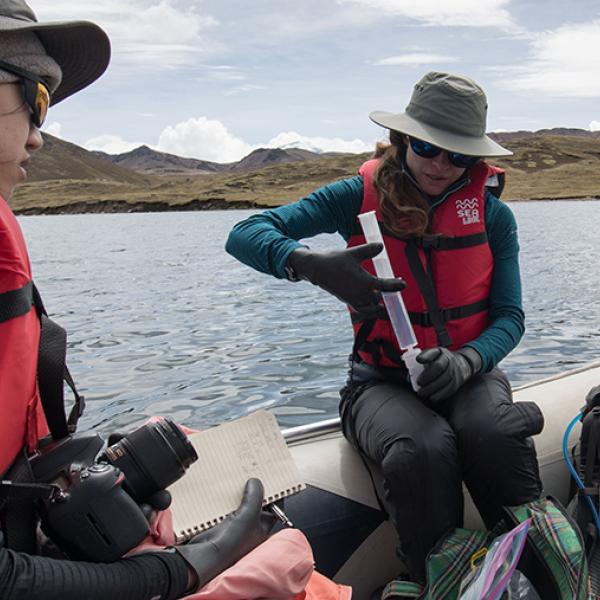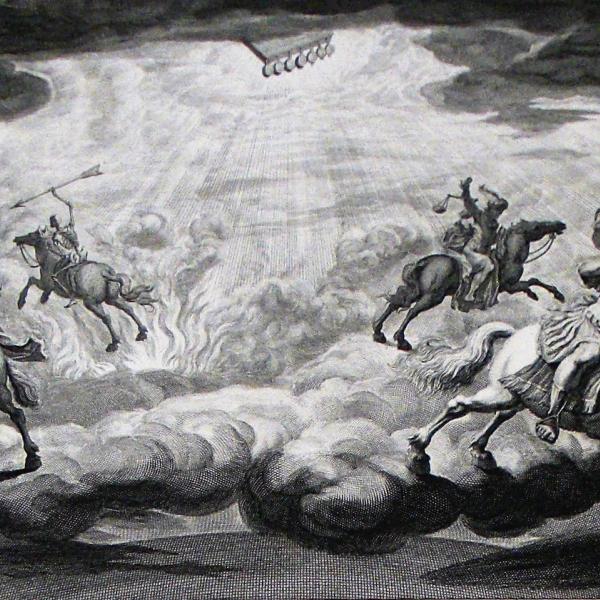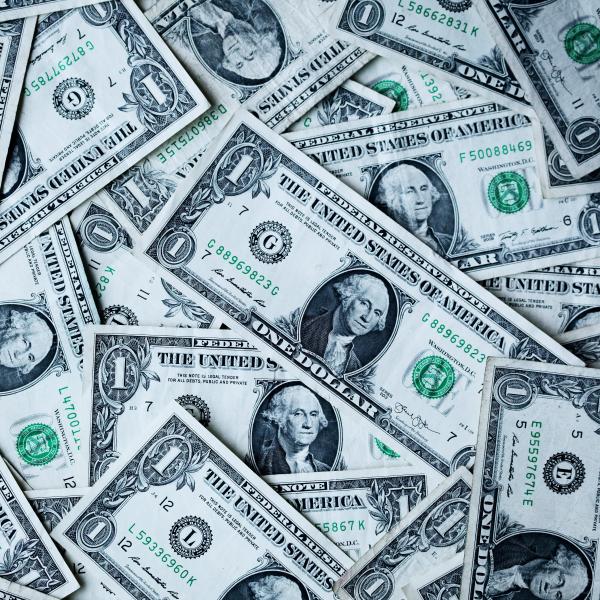Before film or even audio recordings, audiences across the south flocked to traveling tent shows for entertainment. Under these tents, female performers like Gertrude "Ma" Rainey helped invent and popularize a new type of music: the blues. Paige McGinley, author of Staging the Blues: From Tent Shows to Tourism, brings these elaborate performances to life and explains why they are so often forgotten.
Transcript:
Claire Navarro (host): Thanks for listening to Hold That Thought. I’m Claire Navarro. This week, our audio journey starts off with, well, a journey. A road trip.
Paige McGinley (guest): Actually I was driving across the country from California to the east coast. I was with a friend, and we took the long way and drove through Mississippi.
CN: Paige McGinely is author of Staging the Blues: From Tent Shows to Tourism. Looking back, McGinley says it was that cross-country road trip that first sparked her interest in the history of blues music. Like many people, she had some assumptions about what that history might have looked like.
PM: I assumed it was a genre performed mostly by men, on a street corner or on a front porch - these kinds of images of blues authenticity that have been handed down to us were very much in my mind.
CN: That was back before she started actually researching the blues. Years later, digging through archives, McGinley found a much different picture. Instead of lonely men on street corners, she discovered a loud, flashy, outdoor world of entertainment. She found the tent show.
PM: For several decades, really until film took over as popular entertainment, the tent show was a huge entertainment form. So these companies would be on circuits. They were largely all-black companies, although they did perform for black and white audiences, and they were just wildly popular.
CN: All throughout the nineteen-teens and twenties and beyond, these tent shows traveled from town to town all across the south. Think of them as elaborate variety shows.
PM: So there were songs and musical performances, but there were also acrobatics - things we might think of as more akin to circus. They also had animal acts, monologues, stand up comedy.
CN: And, they had the blues. In these huge tents in front of huge crowds, a new sound was coming to life. And often, the performers were women.
PM: What really stimulated my own interest was this realization that the tent show and these theatrical environments were really lively places, where blues was in fact largely invented by a group of professional touring women who thought of themselves as actresses first and singers second.
CN: This is not the type of performer or performance that McGinley first pictured on her cross-country journey. Instead she found that in reality, from the early 1900s on, blues music was often very theatrical. Music and theater, she says, were intertwined much more so than they are today.
PM: So today in the U.S. we have a special category called musical theater. But really until the 19th century almost all theater was what we would today call musical theater, in a certain way.
CN: Of course this was long before people were holding up their cell phones to record concerts, so you might be wondering, how is it possible to know what really went on in these tent shows? For one, scholars like McGinley study archival materials, like newspapers. And as she found, these old documents sometimes reveal surprising details.
PM: I was doing research for this book and I was reading the Indianapolis Freeman, which was a black newspaper published in Indianapolis, and it had a column called "The Stage". And in this column were all of the sort of reports from the tent shows - actor gossip, this kind of thing. And I kept seeing all these references to Rainey - Rainey the comedian, Rainey the wardrobe mistress, Rainey the blues singer. And I thought, "Wow, there sure were a lot of Raineys touring these tent shows," until I had this realization that of course they're talking about the same person.
CN: That person was none other than Ma Rainey, a woman many people would later call the Mother of the Blues. Rainey was born sometimes in the 1880s, and according to McGinley, there’s a lot about her early life that historians still don’t know about. However as a tent show performer, she left a huge impression. Remember that image of the sad older man singing the blues on a street corner? Try to picture the exact opposite, and you might get close to envisioning Rainey in these tent shows.
PM: She was known for her extravagant costuming. She would come out wearing gold glittering gowns. She had gold plated teeth. She had a necklace that was made out of money, literally. And people loved her flashy bejeweled costume that was really about displaying wealth. This meant a lot to the poor black audiences in the south to see this woman really enjoying and performing her success.
CN: Of course with a look like that, you have to have a performance to match. And Ma Rainey delivered.
PM: Ma Rainey was very famous for an entrance that she made in the tent show. And this is around 1923, 1924. Aa giant prop Victrola, so phonograph, was wheeled onto the stage, and from inside the phonograph a song would be heard. And there was also a chorus girl who would take a giant prop record and place it on the phonograph. And so the image that was presented to the audience was that here is this giant phonograph, and it's playing a song. Of course the song is coming from inside the prop machine. At a climactic moment in the song, the machine doors would open and Ma Rainey would emerge. So she sort of came out of the recording machine into the live space of the stage, and the audience just went wild for this.
CN: With all this glitz and glamour and humor, Rainey was still a blues singer. In fact, according to Rainey herself, she was one of the first people to perform this type of music.
PM: She claimed to incorporate blues into her act in 1902, which is really by far the earliest of any accounts.
CN: This idea that Rainey was the “mother of the blues” was later her claim to fame – but McGinley believes it’s important to remember the full picture. Rainey the actress, Rainey the comedian, Rainey the singer – and that’s just the beginning.
PM: She really did everything on the tent show. She was a musician. She was a comedian. She was a wardrobe mistress. She managed many of the children on the tour. And so it was really one thing among many that she did. And then eventually became famous for her blues performances. And then once recording gets into the act, then we're off to the races in terms of a new genre called "blues."
CN: So with such memorable characters as Ma Rainey, Bessie Smith, and others within this real-life history of the blues, why do so many people, including McGinley herself back before graduate school, think of the blues as that old man singing on the porch in the south? Why did one history win out over the other in the popular imagination? It turns out there are many layers to this history. That lonely bluesman, McGinley believes, was passed down to us not by performers or historians, but by listeners – people who first started listening to the blues in the 1950s and 60s.
PM: Our idea of blues, our sort of popular conceptions about blues today, largely come to us through the blues revival of the 1960s - the blues and folk revival. So this is a moment when largely white fans discover for the first time black vernacular music. That then results in a sort of rerelease of records, the sort of discovery or rediscovery of performers who are by this point in the early 1960s quite elderly. They're brought to perform at the Newport Folk Festival, and so there's this way in which blues gets produced in the 50s and 60s by record producers, by fans, by clubs, and that is produced with this vision in mind of the vernacular blues man - almost always a man, almost always old, wearing overalls. This idea of blues as a professional entertainment industry is not one that's embraced by the blues revival.
CN: In the blues revival, the picture of Ma Rainey dripping with gold and rising out of a huge fake record player did not fit the image of authentic folk music that people wanted to see and hear – I’m using “authentic” in air quotes here. And unfortunately, the same was true for many of the early female blues singers.
PM: Women's records were not circulated in the same ways that men's were.
CN: With her book Staging the Blues, McGinley wanted to help set the record straight. She sees more appreciation for singers like Ma Rainey today than there was in during the blues revival, and also a better understanding of the overlap between theater and the blues. However, there’s still much more to learn.
PM: I think these women have largely not gotten their due. And not only as performers themselves, individual women like Ma Rainie and Bessie Smith, but also the women whose names we don't know who toured with these tent shows for decades. And then the influence that that theatrical form has on subsequent performers throughout the 20th century up until today. We still see a lot of debates about what constitutes black authenticity in musical performance. And one of the things I wanted to get across with the book is to show how these ideas about black authenticity are always entangled with a theatrical history and with theatrical strategies and performance strategies from the very beginning.
CN: Thank you to Paige McGinley for joining Hold That Thought. In her recent work, McGinley is studying performance strategies in Civil Rights movement protests. You can find a link to her faculty profile and many more ideas to explore on our website, holdthatthought.wustl.edu. Thanks for listening.
Credits:
Ma Rainey Moonshine Blues, Prove It On Me Blues, Black Eye Blues Deep Moaning Blues, Booze and Blues




